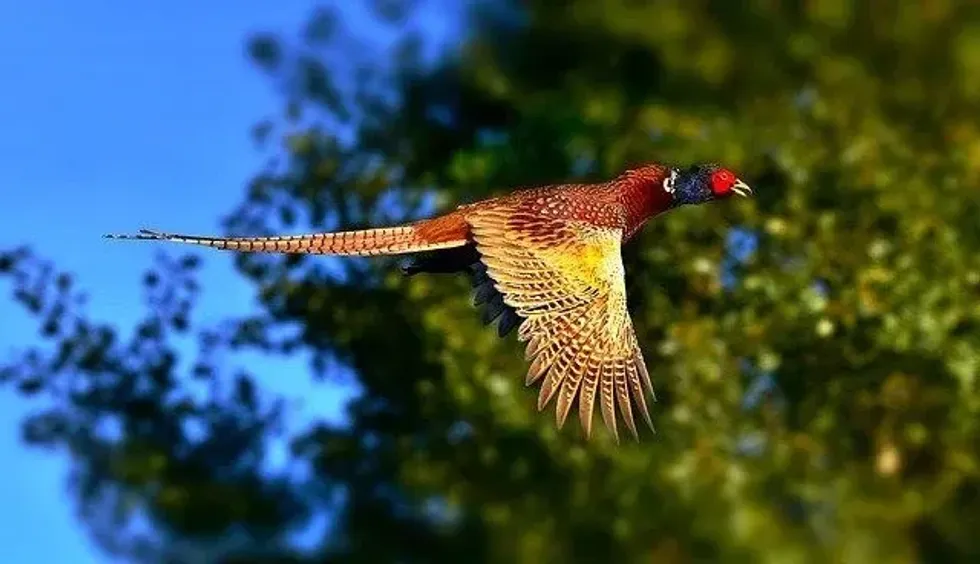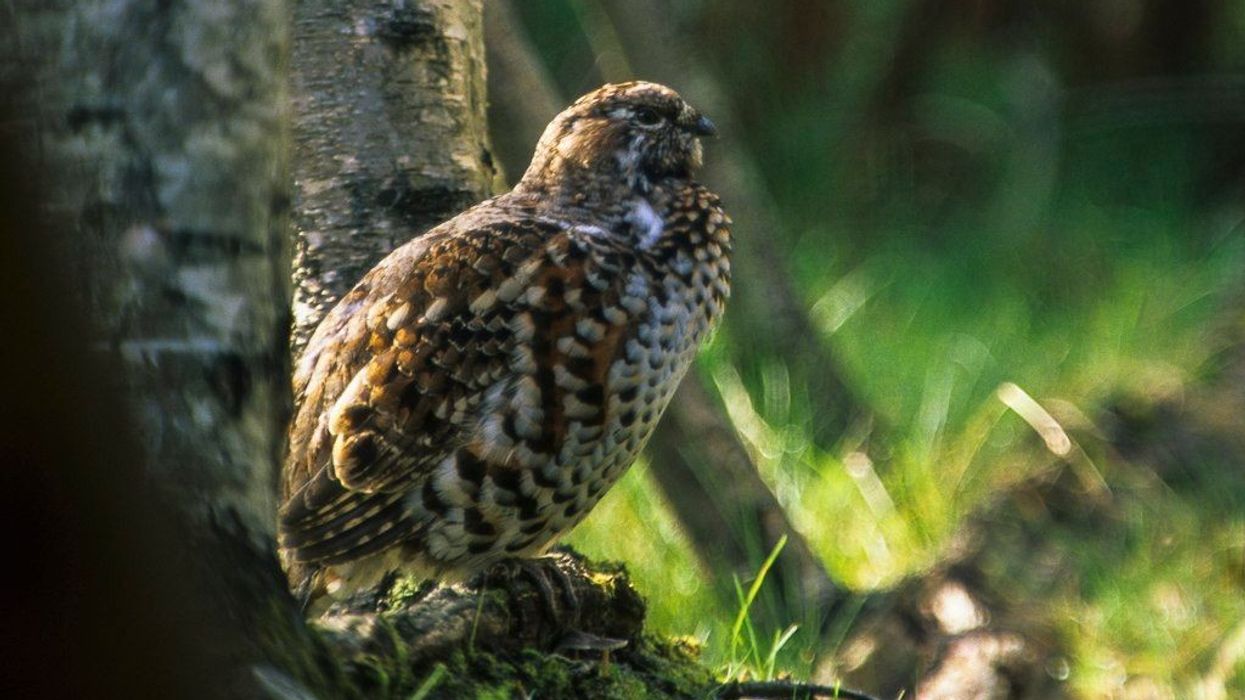Pheasants are non-migratory species indigenous to Eurasia. Their native habitat extends from the Caspian Sea, east across central Asia to China, and includes Japan, former Burma, and Korea. It was introduced to North America, Europe, Australia, Hawaii, and New Zealand.
These birds are mainly used as game birds during the hunting season. They are hunted for their meat and eggs. The meat is very tasty and more nutritious than chicken, with white ring necked pheasant meat being the best.
There are many color forms of the male bird which range in color from nearly white to almost black in some melanistic examples. They live for around 3-18 years.
The annual mortality rate of adult females is 79-54%. But it is exceptionally high for male birds at around 93%. This is caused by uncontrolled predation, exposure to toxins and pesticides, being hit by motor vehicles and agricultural activities.
Pheasants are able to fly short distances but they favor running. If alarmed, they can abruptly fly up at high speed, with a characteristic call to warn other members of their flock.
Their flying speed is only 27-38 mph (43-61 km/h) but they can fly up to 56 mph (90 km/h). Ring necked pheasant facts, golden pheasant facts and lady amherst pheasant facts are also extremely interesting and can make for an immersive read.
Pheasant Interesting Facts
What type of animal is a pheasant?
A pheasant is a type of bird.
What class of animal does a pheasant belong to?
The pheasant belongs to the Aves class of the Animalia kingdom.
How many pheasants are there in the world?
According to the IUCN Red List, the global population size of the common pheasant is around 160,000,000-219,999,999 mature individuals.
Where does a pheasant live?
Pheasants can be found in scrub, woodland, wetland, and farmlands. In their natural habitat, pheasants live in grassland near the water with small patches of trees.
What is a pheasant's habitat?
Pheasants are native to parts of Europe and Asia; their primary habitat range extends from the Caspian Sea, the Balkans, and the Black Sea to Siberia, Manchuria, Mainland China, Korea, and Taiwan.
Who do pheasants live with?
Pheasants mainly live in a flock with their own species. Being social birds, they flock together in large groups, searching for food and cover before winter sets in.
How long does a pheasant live?
Pheasants live for around 3-18 years. But the annual survival rate of adult pheasants is very low due to poaching by humans and motor accidents.
How do they reproduce?
Common pheasants are polygynous. The male bird is often followed by a large group of female birds which the male attracts with its beautiful plumage. Pheasant hens lay around 8-15 eggs at a time. The eggs are laid over a period of 14-21 days from April to June.
The incubation period lasts about three to four weeks. Pheasants mature fast when it comes to reproducing. They usually start breeding by the time they get a year old.
What is their conservation status?
Pheasants are widely distributed and their conservation status is of the least concern. They are classified as Least Concern (LC) on the IUCN Red List but their numbers are slowly declining.
Pheasant Fun Facts
What do pheasants look like?

Pheasants are thin-tailed birds that are medium in size with long bodies that are shaped like pears and have small heads. The color of the heads varies from deep green to bright purple.
Many subspecies of the bird have a distinguishing white-colored collar around their neck and are called ring-necked pheasants. The males possess multi-colored, magnificent plumage, plump red patches around their eyes, and sharp, tall tails.
The female birds are less colorful and have shorter tails when compared to males. They have brownish, mottled feathers. The birds are sexually dimorphic.
How cute are they?
Male pheasants have beautiful, colorful plumes and look quite cute.
How do they communicate?
Pheasants are noisiest during the mating season. The male pheasant crows all year round, especially at dusk and dawn. Females use one call to signal their brood to hide from danger, or another to call them back together.
How big is a pheasant?
A ring necked pheasant has a size between 23.62-35.03 in (60-89 cm), which is about thrice the size of a home sparrow.
How fast can a pheasant fly?
The flight speed of pheasants is only 27-38 mph (43-61 km/h) when cruising but they can increase their speed up to 56 mph (90 km/h) when chased.
How much does a pheasant weigh?
Pheasants weigh between 1.1-6.61 lb (0.5-3 kg).
What are their male and female names of the species?
Male pheasants are called cocks and females are called hens.
What would you call a baby pheasant?
Baby pheasants are called chicks.
What do they eat?
Pheasants are omnivores. They eat an extensive variety of vegetables, like grain, fruit, mast, seeds, leaves, and berries. They consume a wide variety of meats as well, ranging from small insects such as grasshoppers to small vertebrates like lizards, and even small birds.
Are they dangerous?
No, they are mainly used as game birds.
Would they make a good pet?
Pheasants are mainly game birds but chicks can be kept as pets too. Female pheasants are kept as pets in farms for eggs while male pheasants are commercially bred as game birds.
Did you know...
Pheasants take great pain to maintain their beautiful feathers. They rake up dirt particles and sweep sands with their plumage as this behavior helps to remove old feathers, dead epidermal cells, sheaths of new feathers, and excess oil.
These multicolored birds are identified as ring-necked pheasants in North America. They have the rare privilege of being identified as the state bird of South Dakota, even when they are not a native American bird species. It is only the third species of bird to acquire so.
During the winter season, when food is scarce, these birds can dig through heavy snow to find something edible.
Different Types Of Pheasant
There are approximately 49 different species of pheasants around the world. Here are some of the most common species of pheasants.
Ring-necked pheasant: Golden Pheasant: Lady Amherst’s Pheasant: Black Pheasant: Silver Pheasant: Reeve's Pheasant.
Do People Eat Pheasant?
Yes, pheasants are healthy to eat. Pheasant has lower fat and cholesterol levels when compared to other meats such as domestic turkey, chicken, or beef. White ring-necked pheasant is regarded as the top meat pheasant in the world.
Here at Kidadl, we have carefully created lots of interesting family-friendly animal facts for everyone to discover! You can even occupy yourself at home by drawing one on our winter birds coloring pages.
You can even occupy yourself at home by drawing one on our Pheasant coloring page.









